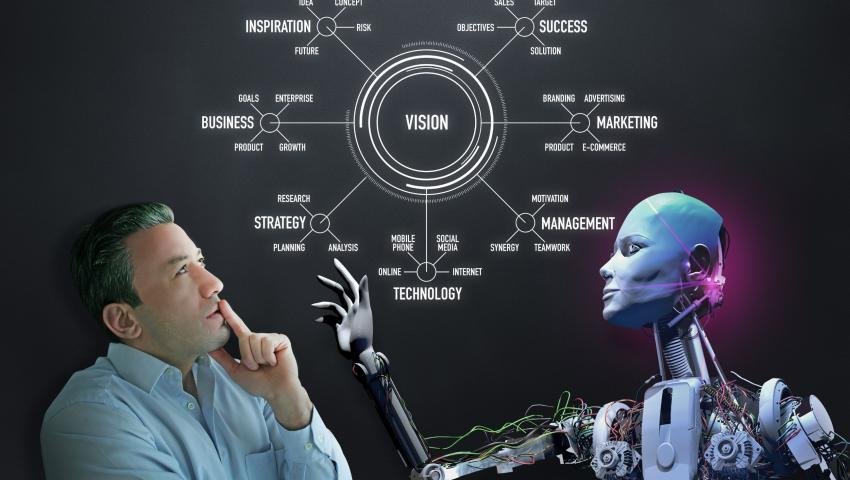
Computer Vision: How Machines Are Learning to See (And Why It’s Wildly Useful)
Computer vision is a field of artificial intelligence that teaches computers to “see” and understand visual information — just like humans do. It’s all about helping machines interpret images, videos, and real-world scenes so they can make decisions or take action based on what they see.
Computer Vision: How Machines Are Learning to See (And Why It’s Wildly Useful)
Let’s not sugarcoat it: the fact that computers can now “see” is both mind-blowing and kind of creepy. Like, remember when cameras were just for taking blurry selfies or catching your cat doing something weird? Now they’re scanning faces at airports, counting cars in traffic, and helping surgeons navigate inside the human body. Yeah. Wild.
That’s computer vision — a fancy name for teaching machines how to interpret visual information. Not just look at images, but actually understand them. And it's showing up in more places than most people realize.
Let’s break it down.
Okay, So What Is Computer Vision?
In simple terms?
It’s making machines see like humans. But honestly, sometimes better than humans.
We’re talking:
- Recognizing objects in photos
- Identifying faces (hi, Face ID)
- Tracking motion in videos
- Reading handwritten text
- Detecting defects on a factory line
- Even spotting diseases in X-rays
It's the tech behind all those cool (and sometimes terrifying) features you see in modern apps, devices, and industries. But it didn’t just appear overnight — it’s the lovechild of machine learning, image processing, and a whole lot of labeled data.
Real-World Places You’re Already Using Computer Vision (Even If You Don’t Know It)
1. Face Recognition (a.k.a. “Hi, It’s Me” on Steroids)
You unlock your phone with your face. That’s CV.
Security cameras flag people at stadiums or airports. That’s CV.
Instagram knows where your face is for filters. Yep, still CV.
Sometimes awesome. Sometimes controversial. Always powerful.
2. Self-Driving Cars
Cars aren’t driving themselves just by chance. They’re using cameras + sensors + real-time computer vision to detect:
- Lane lines
- Pedestrians
- Road signs
- Other cars
Basically, your car is watching the road harder than most humans on a Monday morning.
3. Healthcare Diagnostics
Doctors now use computer vision not just to see — but to see better. From spotting tiny tumors to reading X-rays faster than ever, CV tools are becoming an extra set of eyes in modern healthcare. It’s not about replacing doctors — it’s about helping them catch what human eyes might miss.
Scary accurate, sometimes.
4. Retail & E-commerce
Ever used an app that lets you “try on” sunglasses or lipstick? Or see if that IKEA chair fits your room? That’s computer vision mixed with AR.
Also, behind the scenes: stores use CV to track foot traffic, shelf stock, and product placement. Retail therapy meets real-time analytics.
5. Manufacturing & Quality Control
Imagine staring at thousands of products flying past on a conveyor belt, trying to spot defects with your tired human eyes.. Now imagine doing it without going cross-eyed. CV systems can spot defects, mislabels, or even micro-cracks in real-time — way faster (and more accurately) than a tired human.
But... How Does It Actually Work?
Alright, without going full PhD:
- Image is taken (via camera or uploaded photo)
- Computer breaks it down into data (pixels, shapes, patterns)
- Algorithms analyze the data — sometimes trained on millions of examples
- Machine makes a decision (e.g., “That’s a dog, not a bagel”)
The magic sauce is in the training. You feed a model thousands (or millions) of labeled images — say, pictures of dogs and cats — and over time, the system learns to tell them apart. Neural networks (the deep kind) do most of the heavy lifting here.
The Hard Truth: It’s Not Perfect (Yet)
Let’s be real: computer vision can be amazing, but it’s not flawless. Here’s where things get messy:
- Bias in training data = biased results (yep, still a huge issue)
- Poor lighting or angles can confuse the system
- Privacy concerns are real and growing (especially with facial recognition)
- It’s data-hungry AF — you need tons of images to train properly
Like any tech, it reflects the quality of the people building it. Garbage in = garbage out.
Why It Matters (a Lot More Than You Think)
Computer vision isn’t just about cool apps or sci-fi buzz. It’s reshaping industries quietly in the background.
- Farmers are using it to monitor crops via drones.
- Insurance companies use it to assess car damage after accidents.
- Banks use it to scan documents and IDs in seconds.
- Content creators are using it to auto-tag, blur faces, and improve video editing.
Basically, if your job involves looking at stuff and making decisions, CV can probably help — or eventually automate it.
So… Where’s It Going?
We’re heading toward a future where everything has eyes — your fridge, your car, maybe even your mirror.
- Smart glasses with real-time object recognition
- Home security that understands what it’s watching
- Assistive tech that helps visually impaired people “see” their surroundings
- Shopping just by pointing at stuff
And when you mix computer vision with AI + AR + voice + real-time translation? That’s when things really get spicy.
Final Thoughts: Computer Vision Isn’t Just Tech — It’s a Superpower
If you’re building something — an app, a business, a startup — and you're not at least thinking about how computer vision could be part of it… you might be leaving serious value on the table.
It’s not about jumping on trends. It’s about solving real problems faster, better, and sometimes, in ways humans just can’t.
Because sometimes, seeing is believing.
And with computer vision? Machines are starting to believe, too.
Rukhsar Jutt
Leave a comment
Your email address will not be published. Required fields are marked *

